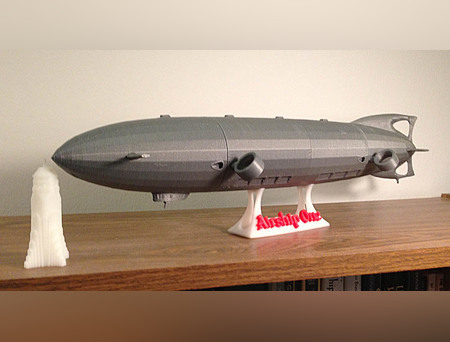UK-based iMakr has opened a retail storefront in the deep south of Manhattan. Now New Yorkers can see a variety of 3D printers in the flesh.
Read More
UK-based iMakr has opened a retail storefront in the deep south of Manhattan. Now New Yorkers can see a variety of 3D printers in the flesh.
Read More3D print artist Eric van Straaten has developed a unique pricing strategy to enable more people to own a print of his incredible designs.
Read MoreAt an event during the re/Code Conference Walmart’s CEO Doug McMillon hinted that his company might be in the market to acquire a 3D printing company.
Read MoreWe’re wondering if the constant and rapid developments in 3D printing technology could hinder growth. But how could this be? There has never been a time in history when more 3D printing technology can be purchased at such low prices?
Read MoreNeed a 3D printer? How about two? We found a deal where you can get two different 3D printers for one price.
Read MoreiMakr, perhaps the first independent 3D printer retail store, announced expansion to New York City.
Read MoreAs promised in their January announcement, MakerBot made good on their promise to open a digital store for 3D models.
Read MoreThe iMakr retail store in London was perhaps the very first independent 3D printer store designed specifically for personal 3D printing products. Now they’ve taken a step into a new world.
Read MoreWe checked out an ingenious marketing approach used by a leading online diamond ring retailer, Brilliance.com.
Read MoreWith the seemingly weekly arrival of new personal 3D printers and manufacturers, one has to wonder which companies are “winning”. We’ll take a stab at it.
Read MoreHave you ever wondered what it’s like to receive your first 3D printer? YouTube video producer Eyeisman (Tom Rosato) has captured the experience for you when he opened up his first 3D printer, a Pirate3D Buccaneer.
Read MoreStaples is a pretty big chain, supplying office equipment and supplies to a large portion of the planet. They sell 3D printers, too. But not everywhere.
Read MoreNew entrant XYZ Printing offers personal 3D printers at incredibly low cost, as low as USD$499 per unit. How do they do it?
Read MoreWe’re checking out a new service targeted at 3D print services: Protocow. But perhaps you could use the service, too.
Read MoreThe technology of 3D printing just got a bit more mainstream with an announcement from one of online retail giant Amazon’s sellers.
Read MoreEveryone knows that purchasing ad space during the Super Bowl is prohibitively expensive. It’s so expensive that no 3D printing company could afford an ad. Or could they?
Read More














